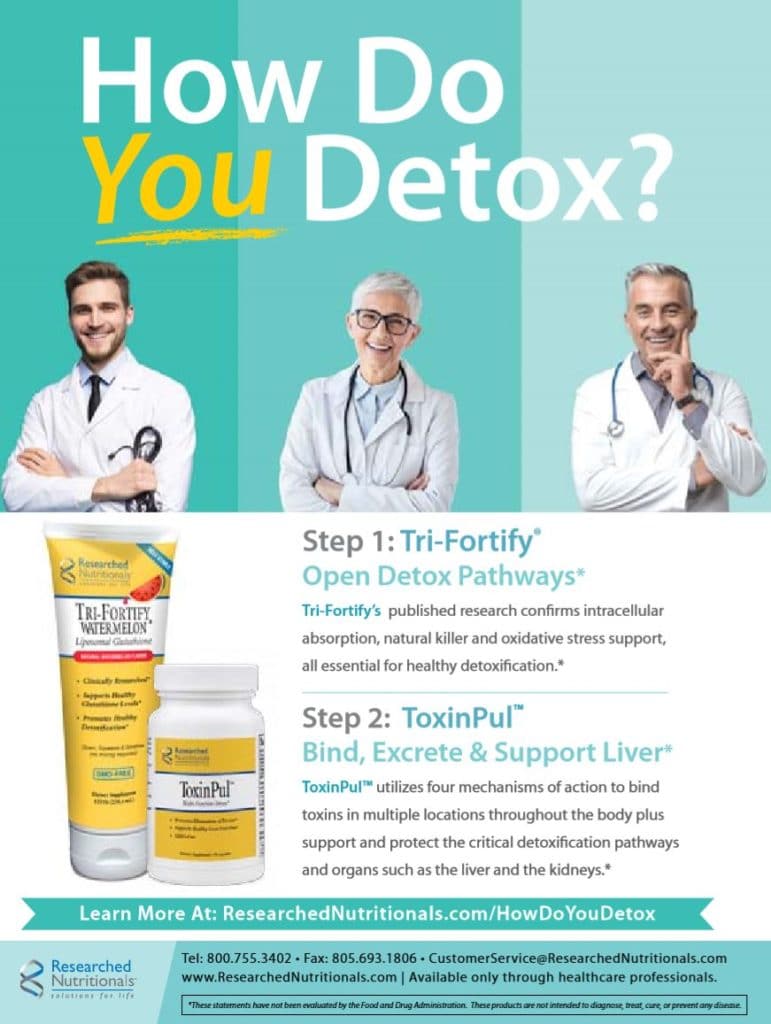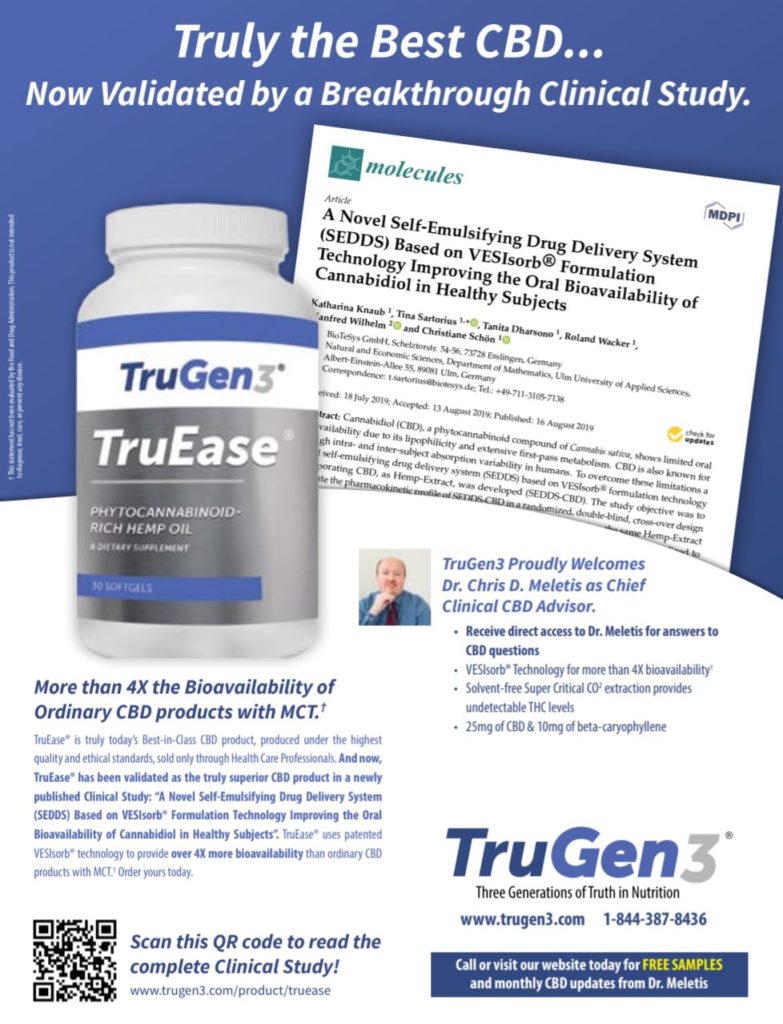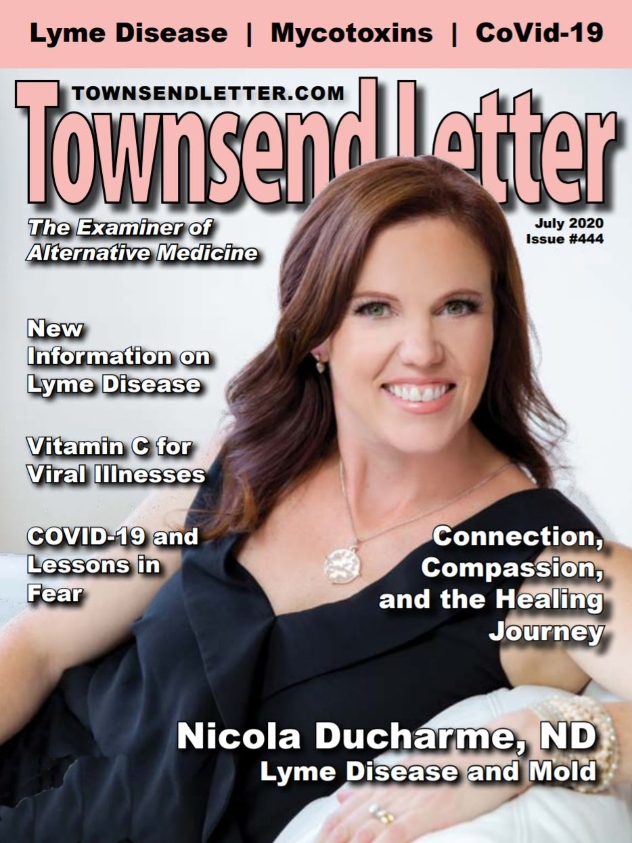… article continues:
Toxicity. Mycotoxin illness is clearly a toxic issue. Mold spores give off toxins that are inhaled into the body and settle there. If you are one of the unlucky 25% that can’t detoxify mold properly, those toxins can stay for years, until something is done to get them out. Lyme has a strong toxic element too – any antimicrobial therapy, killing the bugs, causes them to release toxins into one’s body as well, which then have to be detoxified. This is what Lyme patients identify as a Herxheimer reaction. Therefore, addressing detoxification in the body through methylation support, liver/kidney support, blood cleansers, opening up pathways of elimination (skin, lungs, kidneys, bowels) is key for both situations. I tend to use a combination of herbal tinctures and glutathione for detoxification, as well as encouraging patients to do home-based modalities such as Epsom salts baths, infrared sauna, and coffee enemas.
Inflammation. In the previous section on markers of neuro-inflammation and immune dysregulation, we saw that there are many different indicators that reflect the inflammatory cascade that many of these stressors on the body can create. Massive inflammation in the body and neuro-inflammation occur both in Lyme disease and mycotoxin illness. Therefore, the common thread of working to support healthy immune function while dampening inflammation in the body is a valuable approach. One’s diet can play a big role in that: avoiding gluten, dairy and other inflammatory foods, including saturated fats, and eating lean proteins, healthy fats, and vegetables. There are many herbs that help calm the inflammatory response, such as curcumin, white willow, and green tea. I love Cytoquel by Researched Nutritionals. Proteolytic enzymes can be helpful as well; InflaQuell (also by Researched Nutritionals) is a great blend. When taken on an empty stomach, it can help to break down the products of inflammation in the body.

Immune regulation is somewhat linked with inflammation since immune responses create inflammation. But separate from reducing inflammation, it’s also important to strengthen a health immune response while minimizing the possibility of an autoimmune situation being triggered. I utilize Transfer Factors, both general—such as Transfer Factor Multi-immune—and targeted, with TF L-Plus and TF Enviro, to cover both Lyme and mycotoxins. They strengthen immune response and enhance signaling and communication within the immune system.
If I see any indicators of autoimmunity (thyroid antibodies, positive ANA etc), I will suggest low dose naltrexone for its ability to help balance the immune response through upregulation of enkephalins (immune-mediating chemicals). Through its ability to boost endorphins it can be helpful for pain, mood balance, sleep and energy, which are things that the majority of Lyme/mold patients struggle with.
Gut Health. I would estimate that 80% of my Lyme/mold patients have fairly significant digestive issues. Both conditions can create gastrointestinal symptoms, or they may be a slightly separate phenomenon. Either way, if one’s gut isn’t functioning well, it can hamper treatment overall. Remember, too, that the gastrointestinal tract has its own nervous system and its own immune system so it’s a vital system to have functioning well.
Anything that causes imbalance and inflammation in the gut can lead to a condition called leaky gut, where the junctions between the cells in the small intestine open up and allow larger-than-normal food particles into the bloodstream. The immune system reacts to these as a threat and will mount an immune response, leading to, you guessed it, inflammation. The chemicals of inflammation can travel through the bloodstream and cross the blood-brain barrier, causing even more issues in the central nervous system.
Treating the gut is also important to be able to tolerate various treatments for Lyme and mold. We can’t give antibiotics to a person who has massive gastritis or dysbiosis; we might have trouble getting any binders, especially cholestyramine, into a patient with ongoing constipation.
Candida overgrowth. Another part of the discussion about gut health involves Candida and other yeast overgrowth. I have found my Lyme patients have a greater propensity to Candida overgrowth, whether or not they are taking antibiotics. We are also paying more attention now, thanks to the work of Dr. Brewer and Dr. Nathan, to yeast and fungal colonization in the sinuses that ties into the mycotoxin picture.
I like to use a very direct test to evaluate for Candida as well – the urine Microbial Organic Acid test from Great Plains Lab. It measures metabolites of yeast and gives a clear, quantified report that can be used as a baseline for monitoring treatment.
Other non-prescription things that can be useful as nasal sprays are colloidal silver, and XClear. There are many great antifungal herbs (my favorite blends are Biocidin and Citricare), and we also have prescription antifungals such as nystatin, fluconazole, and itraconazole. I use all of the above in both my Lyme and mold patients.
Oxidative stress, aka free radical damage, occurs in all of us in each and every cell, but toxins and infections are going to accelerate it. High levels of oxidative stress have been linked to a myriad of chronic health conditions. We can help counter oxidative stress using nutrigenomics. I use an NRF2 activator that is a combination of five herbs in very specific ratios and functions to bring down oxidative stress. I have seen this be helpful in both my Lyme and mold (and combinations thereof) patients in enhancing their overall baseline of health.
Mitochondrial dysfunction. The mitochondria are the powerhouses of our cells that produce ATP, or energy. Mitochondrial dysfunction also plays a big role in chronic health conditions. We can support mitochondrial repair with agents such as phosphatidylcholine, Coq10, ALA, acetyl-L-carnitine, and glutathione. I use an Nrf1 activator that contains a combination of the key nutrients.
Limbic system dysfunction. If you are an individual that just looks at a herb and gets a negative side effect, you are reactive to everything, including foods, chemicals, and EMFs, and are trying to figure out how you’ll tolerate the treatment you need when everything makes you sick, you might want to consider limbic system dysfunction getting in the way.
The premise of limbic system dysfunction is that the part of the brain called the limbic system gets “stuck” – the wiring all gets tangled, neurons are stuck in negative pathways, and as a result its putting out signals to the rest of the body that create disordered function in the body.
Annie Hopper developed a program called Dynamic Neural Retraining Program,4 that helps people address limbic system dysfunction. It is a step-by-step system, based on neuroplasticity, which means that we can indeed rewire our brains in healthier patterns with healthier signals. This leads to healthier physiological responses in the body as a whole.
I have seen this program benefit many people. It can be done from your own home and can help with Lyme disease, mycotoxin illness, EMF sensitivity, multiple chemical sensitivities, and more. It also helps to release prior trauma, which Annie believes is a significant piece of causing the dysfunction in the first place.
Conclusion
It used to be that a complex Lyme patient was that way because of multiple co-infections; now it’s a tangled web of Lyme and co-infections, opportunistic infections (such as Candida overgrowth), mycotoxins, heavy metals, mast cell activation syndrome, to name a few.
Trying to separate each individual stressor out has its challenges, including the accuracy of testing, genetic variances in each individual, responses to treatment etc. It also can be incredibly overwhelming for the patient. The approach of finding commonalities in physiological responses and processes within the body can make treatment planning easier, less overwhelming, and more in line with treating the whole person.
While I have covered quite a few different topics in this article, I want you to take away two key messages. One is, get as specific and direct testing as you can to evaluate what’s going on in the body. The second is, if you don’t know where to start or feel overwhelmed with treatment, go back to basics. Toxicity and inflammation are the most important common threads. They are the key pieces and are shared jointly between Lyme and mold toxicity.
TOXICITY…INFLAMMATION…TOXICITY…INFLAMMATION
Remember that at the end of the day, there is an interconnection between the “terrain” (which is the body), and outside agents such as Lyme bacteria or mold toxins. The more you can do to make the terrain healthier, through diet, positive thought processes, lifestyle choices, clean food/water/air, detox modalities, herbs, and supplements to balance immune function and so on, the best chance the body has to deal with the offending agent.
Lyme and mold might feel like a double whammy, so that’s why it’s important to keep remembering the commonalities. Ask the patient to think of it this way: that you’re working on strengthening your own health; you happen to have a couple of different sources of biotoxins, but they do similar things in your body, and therefore many interventions will help with both. Focus on those interventions as the core of your protocol and build from there.
References
- www.survivingmold.com.
- https://www.survivingmold.com/diagnosis/lab-tests
- Nathan N. Toxic: Heal Your Body from Mold Toxicity, Lyme Disease, Multiple Chemical Sensitivities, and Chronic Environmental Illness. Victory Belt Publishing, 2018.
- www.retrainingthebrain.com
Nicola McFadzean Ducharme, ND, is a licensed naturopathic doctor and is the founder and medical director of RestorMedicine. She consults with patients around the world, blending conventional and integrative approaches to treating Lyme and other tick-borne illnesses.
She has authored several books on the subject, including the best-selling The Lyme Diet, The Beginners Guide to Lyme Disease, Lyme Disease in Australia, and Lyme Brain. She has also been a chapter contributor in two of Connie Strasheim’s books, Insights Into Lyme Disease Treatment, and New Paradigms in Lyme Disease.
Dr. Nicola has developed two online training programs for Lyme disease – Lyme-Ed for Patients and Lyme-Ed for Practitioners.
She can be contacted through her practice www.restormedicine.com or www.drnicoladucharme.com. Her courses can be found at www.lyme-ed.com.







